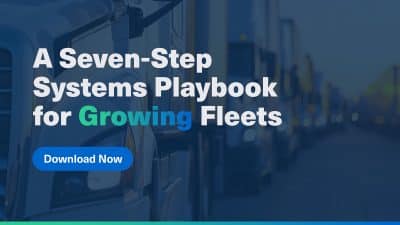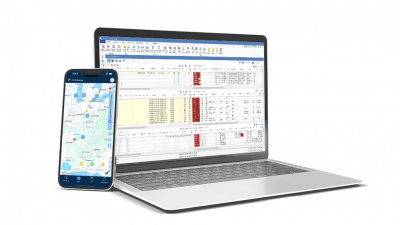Summary
In this video, PCS CTO Paul Beavers discusses some of the constraints that limit the ability of shippers to reduce empty miles, and how technology can help to overcome this challenge. He also touched on areas where a TMS can help organizations make a measurable impact on the environment. Read the full Q&A transcription below.
Q: Empty miles are always a low-hanging fruit for shippers and their private fleets, as well as for the carriers they do business with. What are some constraints that limit the ability of shippers to reduce empty miles, and how can technology help overcome these challenges?
A: I would say the biggest challenge to reduce empty miles is planning. If you look at a big part of what happens in shipper TMS, it’s all that planning. And the challenge that you run into is the planning exercise to take all the loads that I have for the day, and all the stops that I have for the day and put those into trucks and put them onto a route so that my drivers can deliver that planning exercise. That’s probably the biggest friction point. And sometimes it can take as many as eight hours to do the planning exercise for one truck. So if you do simple math, and you say, a large warehouse for a shipper is going to deliver 100 loads, they have 100 Man days or people days of work to do just to prepare those loads for one day, which means they have to have a large number of dispatchers on hand. So that creates inefficient loads, taking shortcuts, and it really shows the inability of the human mind to process all that and develop efficient loads. And so the way to handle that is through AI technology that’s being built into the PCS platform and gives our customers the ability to say, “here’s my loads for the day, here’s all of my equipment and my drivers. You, algorithm, provide me with a route plan.” That route plan can come back in as little as five minutes and will allow the dispatchers to have a route plan that covers and reduces empty miles based on algorithms and historical performance and the weather and a wide variety of inputs. And it also frees up that dispatcher to dispatch more loads. And so if you’re gonna reduce empty miles and by the way, it’s not just reducing empty miles. It’s also maximizing utilization of my drivers. If you’re gonna make my operation more efficient by reducing empty miles or maximizing utilization on my drivers and my equipment the best way to do it is through an advanced algorithm versus relying on human brains to process hundreds if not thousands, if not tens of thousands of orders per day.
Q: Sustainability is a hot topic and increasingly shippers are being evaluated by their customers and investors on what they are doing to reduce their environmental footprint. Besides reducing empty miles, what other areas can a TMS help with that will have a measurable environmental impact?
A: The biggest area is to obviously reduce waste, and by reducing waste, we’re talking about reducing the number of empty miles that a truck has to run, or reducing the number of hours that a truck sits idle outside of a warehouse. So becoming more efficient, both in terms of making sure that my trucks are running full and at full capacity, and they’re loaded in the most optimized way. And a TMS that has those algorithms, AI algorithms built in, can do that. As well as understanding the best possible time to arrive at a facility. So I’m not sitting idle outside of the facility. If you think about the amount of fuel that is required for a refrigerated truck to run as it’s waiting to be unloaded, if that’s a substantial amount of time, it’s not just the time but the fuel that it takes to run the rig. It’s also the time that takes to run the refrigeration unit on the trailer. It’s very important that when a route plan is being developed to take into account the wait time that a rig is going to have when it arrives at a warehouse, especially in dealing with cold goods. And then, of course, empty miles and making sure that we’re reducing the miles. Those are probably the two best ways to reduce the carbon footprint. And there will be others as time progresses, as you start thinking about the electric vehicles and some of those things. But from a transportation management system, it’s all about being efficient. It’s all about my loads being full. It’s all about my loads being on time. And, it’s all about understanding when my loads arrive and how much wait time.
Learn more about our capabilities by requesting your free demo today



